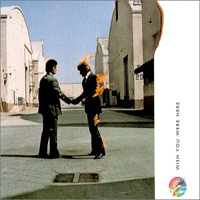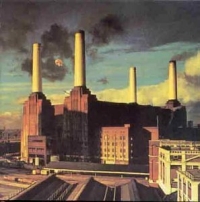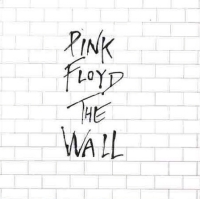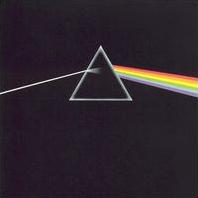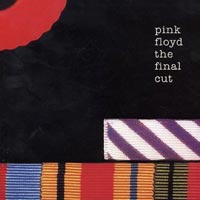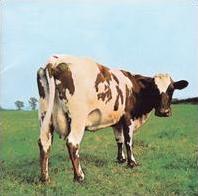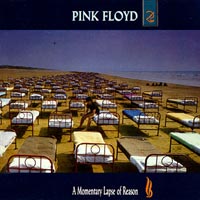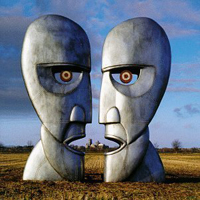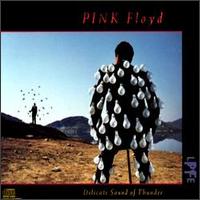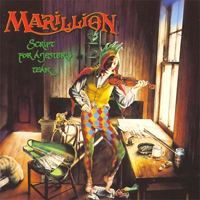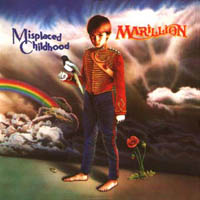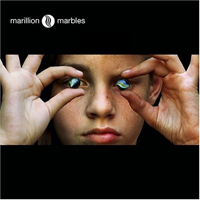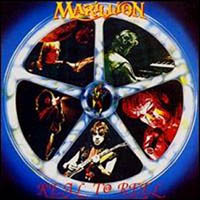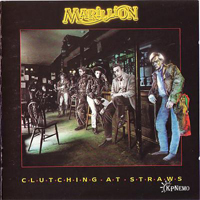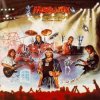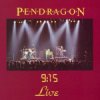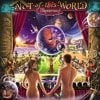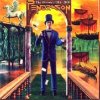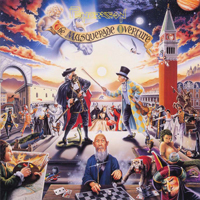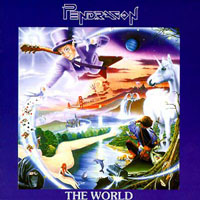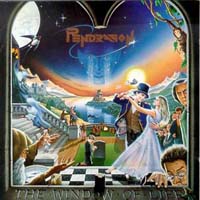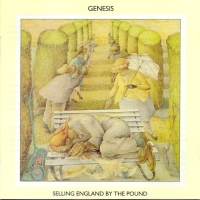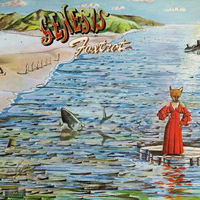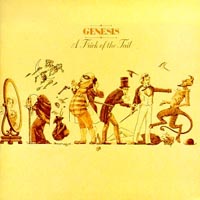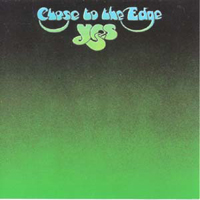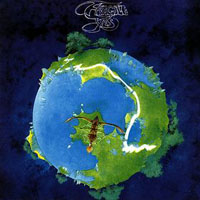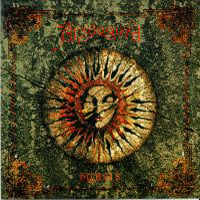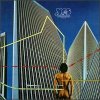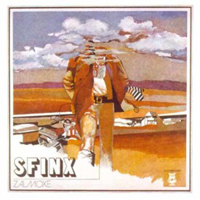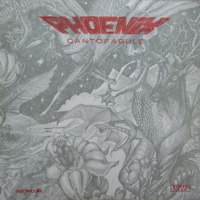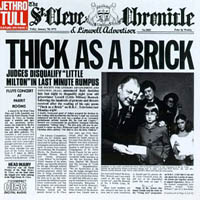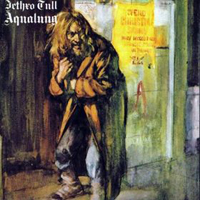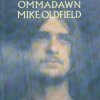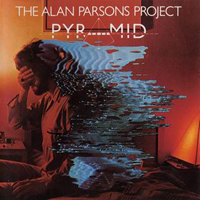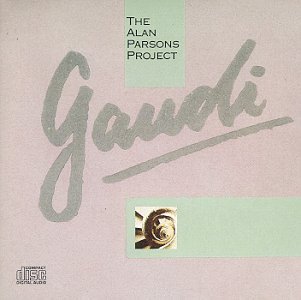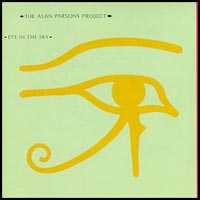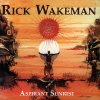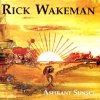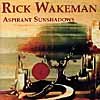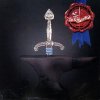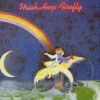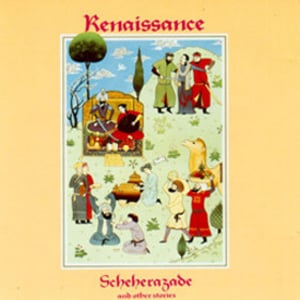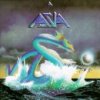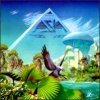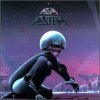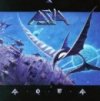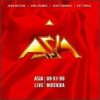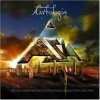 Yes are an English progressive rock band that was formed in London in 1968. Their music is marked by sharp dynamic contrasts, extended song lengths, abstract lyrics, and a general showcasing of instrumental prowess. Yes blends symphonic and other 'classical' structures with their own brand of musical style. Despite a great many lineup changes, occasional splits within the group and the ever-changing trends in popular music, the band has continued on for over forty years and still retains a large following. Band members Chris Squire, Steve Howe and Alan White toured in late 2008 and early 2009 with vocalist Benoît David and keyboardist Oliver Wakeman on the In The Present Tour.
Yes are an English progressive rock band that was formed in London in 1968. Their music is marked by sharp dynamic contrasts, extended song lengths, abstract lyrics, and a general showcasing of instrumental prowess. Yes blends symphonic and other 'classical' structures with their own brand of musical style. Despite a great many lineup changes, occasional splits within the group and the ever-changing trends in popular music, the band has continued on for over forty years and still retains a large following. Band members Chris Squire, Steve Howe and Alan White toured in late 2008 and early 2009 with vocalist Benoît David and keyboardist Oliver Wakeman on the In The Present Tour.History
Formation
Yes was formed in 1968 by vocalist Jon Anderson and bassist Chris Squire. Anderson had already recorded a single in 1964 as a member of The Warriors, a beat band formed by his brother Tony, and later sang on a couple of 45s for Parlophone Records under the pseudonym Hans Christian. He was also briefly a member of the group The Gun. Squire had been a member of The Syn, a flower-pop outfit that recorded a couple of singles for Deram Records (one, "14-Hour Technicolour Dream", celebrating the "happening" held at Alexandra Palace on April 29/April 30, 1967). After the breakup of The Syn, Squire spent a year developing his bass-playing technique, strongly influenced by The Who's bassist, John Entwistle. Then, in May 1968, he met Anderson in a Soho nightclub, La Chasse, where Anderson was working. The two had a common interest in vocal harmony and began working together soon afterwards.
Squire was in a band called Mabel Greer's Toyshop with Clive Bailey, and Anderson also started singing with the group. Drummer Bill Bruford was recruited from an ad he had placed in Melody Maker, replacing Bob Hagger. A jazz aficionado, Bruford had played just three gigs with Blues revivalists Savoy Brown before leaving. The group also included guitarist Peter Banks.
With Bailey's departure, Banks' return and the addition of organist/pianist Tony Kaye, the band became Yes. Banks came up with the three letter name, with the rationale that it would stand out on posters. The classically trained Kaye had already been in a series of unsuccessful groups (Johnny Taylor's Star Combo, The Federals, and Jimmy Winston and His Reflections).
Early Days
Yes played their first show at East Mersea Youth Camp in England on August 4, 1968. Soon after this, they opened for Cream at their 1968 Farewell Concert from The Royal Albert Hall. Early on, influenced by bands like 1-2-3 (later Clouds), the group earned a reputation for taking other people's songs and drastically changing them into expanded, progressive compositions. In September, they subbed for an absent Sly and The Family Stone at Blaise's and as a result of that appearance gained a residency at The Marquee club. Soon after, they made their first radio appearance on John Peel's programme and, when Melody Maker columnist Tony Wilson selected them and Led Zeppelin as the two bands "Most Likely To Succeed" (as he states on the liner notes of the band's debut LP), it appeared that their future was assured.
Their eponymous debut album Yes was released on July 25, 1969. The harmony vocals of Anderson and Squire were an immediate trademark of the Yes sound. The band's optimistic, vaguely futuristic outlook on the world was delivered with a combination of melody and virtuosity. Standout tracks were a jazzy take on The Byrds' "I See You" and the album closer, "Survival", which displayed the band's vocal harmonies and deft song-construction. Notably, the album was given a favourable review by Lester Bangs in Rolling Stone magazine, which described the band as promising, the album displaying a "sense of style, taste and subtlety"
In 1970, the band released their second album, this time accompanied by a 30-piece orchestra. Time and a Word featured mostly original compositions and two cover songs, Richie Havens' "No Opportunity Necessary, No Experience Needed", and "Everydays" by Stephen Stills, originally recorded by Buffalo Springfield. The reworking of Havens' song also included excerpts from the theme song of the movie The Big Country. Although musically exceptional in terms of melody delivery, the orchestra (and keyboardist Tony Kaye) overpowered Banks and much of the vocal work, leaving Time and a Word somewhat uneven. Before the album's release, guitarist Peter Banks was fired and ex-Tomorrow guitarist Steve Howe was hired. Howe was included in the front cover photo of the American release despite not having played on the album.
Entering the '70s
Vocalist Jon Anderson performing in concert with Yes in 1977
The 1970s Yes recordings are still considered the classic Yes sound by many fans. These albums feature complex classically influenced arrangements, unusual time signatures, virtuoso musicianship, dramatic, dynamic and metrical changes and oblique, stream-of-consciousness lyrics. Songs often exceeded the standard three-minute pop-song structure with lengthy multi-part suites sometimes lasting 20 minutes or more, making the band a leading 1970s progressive rock combo. Vocal verses alternated with atmospheric instrumental interludes, frenetic ensemble passages and extended guitar, keyboard and bass improvisations. The signature sonic features of this 'classic' period are Jon Anderson's distinctive high-register lead vocals, the group's strong vocal harmonies, Rick Wakeman (and Patrick Moraz) and Steve Howe's respective keyboard and guitar solos, Bill Bruford's and later Alan White's polyrhythmic drumming and Chris Squire's highly melodic and discursive bass playing, enhanced by the sound of his Rickenbacker model RM1999 bass.
Chris Squire was one of the first rock bass players to successfully adapt electronic guitar effects such as tremolo, phasing and the wah-wah pedal to the instrument. The rhythm section of Squire/Bruford and Squire/White was considered by some to be one of the best in rock music at this time.
The first two Yes LPs mixed original material with covers of songs by their major influences, including The Beatles, The Byrds, and Simon & Garfunkel. In 1970, Peter Banks departed and was replaced by Steve Howe. The group's emerging style coalesced on their next LP, the critically acclaimed The Yes Album, which for the first time consisted entirely of original compositions by the band. It was also the record that united them with long-serving producer and engineer Eddie Offord, whose studio expertise was a key factor in creating the Yes sound.
Steve Howe, lead guitarist for Yes, in 1977
In 1971, original organ/piano player Tony Kaye left the band, and though some reports attest that he was fired, others indicate that he left voluntarily. It is typically reported that the decision had to do with his unwillingness to use modern keyboard technology, as he considered himself to be simply an organist. He soon formed the group Badger. Although a talented player who contributed memorable chord passages on the Hammond organ (particularly on the classic "Everydays" and "Yours is No Disgrace"), Kaye, arguably, could not match Howe's guitar improvisation. He was replaced by the classically-trained Rick Wakeman, who had just left Strawbs and was already a noted studio musician with credits including T. Rex, David Bowie and Lou Reed. Wakeman brought the keyboards up to a level of improvisational skill comparable with that of Howe's guitar. Tony Kaye guested in ex-Yes guitarist Peter Banks' own progressive rock band, Flash. Oddly, Flash was accused of stealing Yes's musical sound – a sound Peter Banks and Tony Kaye themselves were instrumental in creating.
As a soloist, Wakeman proved to be the perfect foil for Steve Howe. He also brought two vital additions to the group's instrumentation: the Mellotron (which Kaye had been unwilling to employ) and the Minimoog synthesizer. Surrounded by banks of keyboards, his flowing blond hair and sequined cape provided a strong visual focus on stage.
The '70s Continued
With Wakeman on board, Yes entered what some consider their most fertile and successful period, cutting two highly acclaimed LPs. Fragile (1971) went Top Ten in America, as did Close to the Edge (1972). Yes enjoyed enormous commercial and critical success around the world and became one of the most popular concert attractions of the day. They also notably benefited from the tremendous advances in live music technology that were taking place at that time, and they were renowned for the high quality of both their sound and lighting.
Fragile also marked the beginning of a long collaboration with artist Roger Dean, who designed the group's logo and their album covers, as well as their stage sets.
In February 1972, in between Fragile and Close to the Edge, Yes recorded a non-album track, their dynamic ten-minute interpretation of Paul Simon's "America". It originally appeared on the album The New Age of Atlantic (1972), a compilation with several acts from the roster of Atlantic Records. This song had been a staple of Yes gigs since the band's early days (a version featuring Kaye appeared on the Word Is Live box set). The Mellotron part on the end of the track was actually played by Bruford.
Some consider the next album, Close to the Edge, to be the high point of the whole progressive rock genre. Some fans of this era describe themselves as "Troopers", after the 3-part track "Starship Trooper" from The Yes Album.
Before the release of Close To The Edge, and at the height of the band's success, Bill Bruford announced that he was quitting to join King Crimson. He was replaced by former Plastic Ono Band drummer Alan White, a more conventional rock drummer and a distinct contrast to the jazz-influenced drumming of Bruford. White was brought into Yes several months before the September 1972 release of Close to the Edge. Their early touring with White was featured on their next release, the three-record live collection Yessongs, recorded on their US and UK tours in November-December 1972. The album included two earlier recordings with Bruford, notably the song "Perpetual Change" with an extended Bruford drum solo, as well as backing Chris Squire in his solo "The Fish", while White played drums on the rest of the tracks. White learned the tremendously ambitious repertoire in a matter of three days before embarking on the tour. (White, a friend of Anderson's and Offord's, had sat in with the band once during the weeks before Bruford's departure. After trying each other out for three months, Squire threatened to throw White out the window if he did not join.) White has lasted with the group for over thirty years, contributing great drumming, navigating ambitious time changes and shifts, and maintaining a reputation for having a collaborative and "down to earth attitude".
Yessongs was a hugely ambitious project and undoubtedly a major gamble for their label, Atlantic Records. It was one of the first rock triple-album sets, featuring live versions of all-original material from the previous three studio albums. Presented in one of the most lavish album packages to date, Roger Dean's artwork spread across a triple gatefold cover and continued the cosmic-organic design concepts of the two previous albums. The album was another bestseller and was recently voted among the top twenty live records of all time. A video of the tour, released under the same name, featured concert footage (with Howe garnering a large amount of the focus because his brother-in-law was the editor) intermixed with psychedelic visual effects.
Their next studio album, Tales from Topographic Oceans, marked a change in the band's fortunes, polarizing fans and critics alike. Although extended compositions were by now a Yes hallmark — the title track of Close To The Edge took up the entire first side of that album — the four roughly 20 minute tracks on the two-disc Topographic Oceans earned mixed reviews and left many feeling that the band was beginning to overreach itself. Coming after extensive touring, the album was later described by Jon Anderson as "the meeting point of high ideals and low energy." Rick Wakeman, in particular, was not pleased with the album, and to this day speaks ill of much of it. It is said that the mockumentary film, This Is Spinal Tap, was largely inspired by the album and its tour. On the other hand, many prog-rock fans consider it to be one of the greatest progressive albums of all time.
Increasing interpersonal tensions between Wakeman and the rest of the band, as well as Wakeman's own burgeoning solo career, led him to quit at the end of the Tales tour in 1974. (In 1976, Wakeman, Bruford and his King Crimson bandmate John Wetton formed a new trio called British Bulldog, but the project failed to get off the ground. Bruford and Wetton subsequently joined with guitarist Allan Holdsworth, and Roxy Music's wunderkind keyboardist/violinist Eddie Jobson, under the name UK.) Wakeman himself embarked on a long, productive solo career, in addition to his projects with his English Rock Ensemble, film scores, and collaborations with other artists.
Perpetual change
After auditioning Vangelis to replace Rick Wakeman, Yes settled on a replacement for Wakeman - Swiss keyboardist Patrick Moraz - for the album Relayer in 1974. Moraz was a distinctive electric-jazz musician in his own right. Again, the album featured a side-long track, "The Gates of Delirium", from which the "Soon" section was put out as a limited single release. Following an extended tour through 1975–1976, each member of the group released his own solo album. At the same time, the album Yesterdays was released, containing tracks from the first two albums, as well as "America" as the opening track.
Yes performing in concert in Oslo, 1977
The group commenced sessions for a new album. There is some confusion about the chain of events, but after a considerable amount of negotiation, Rick Wakeman rejoined the band on a "session musician" basis. The confusion comes from Moraz being on record as saying he feels he deserves credit for much of the music on the resulting album. Certainly Howe has also stated that the group "tried to remove as much of Patrick from the songs as possible", so it would appear that he did contribute to the initial sessions. Ultimately, Moraz ended up at the top of the ambiguous "thanks to..." list on the album sleeve. In any case, after hearing and being impressed by the new material Wakeman once again became a permanent band member. Moraz would go on to have additional success by joining The Moody Blues soon after his departure from Yes.
The resulting album, Going for the One, was the first not to feature Roger Dean artwork since The Yes Album, although it does display the Yes logo that Dean designed. Apart from the 15-minute track "Awaken", most of the album's songs were relatively short, including "Wonderous Stories", released as a single in the UK in 1977 and making the top ten. This album and the next, 1978's Tormato featuring the same lineup, were successful in spite of being released at the height of the punk rock era in Britain, during which Yes were often criticised by the music press as representing the most bloated excesses of early 1970s progressive rock. Ironically, Yes outlasted almost all the groups of that era as well.
The Tormato album is another that has sparked dissension among fans. The band members themselves have said that they were not sure of some of the material on the album. The album artwork would see large changes as well, with design firm Hipgnosis taking a turn once again with their combination of manipulated photography and graphical elements in lieu of the traditional Roger Dean approach. For many fans, this artwork did not properly capture the iconic "Yes" look, though it was arguably as much of a visual departure as that of the music. However, despite internal or external criticisms of this latest album, the band enjoyed successful tours in 1978 and 1979.
In October 1979, Yes convened in Paris with producer Roy Thomas Baker, fresh from his success producing the band The Cars. There are a number of statements by band members and rumours as to why the sessions did not produce a formal album. Howe, Squire, and White said later in 1980 that none of the three of them liked the music Anderson had offered the band, claiming it was too lightweight and lacking in a heaviness that the trio felt they were generating during their own time together. (Bootlegs of these sessions would suggest that Howe et al. were correct in their descriptions of Anderson's music, some of which appeared on his 1980 solo album Song of Seven.) In December, the sessions ended when White broke his foot. There is also strong speculation that Anderson and the remaining members of the band had a falling out over money issues and claims and counterclaims of members spending more than their fair share of their group monies. By May 1980, the situation reached a conclusion with Anderson departing Yes as no agreement could be reached over musical direction and financial remuneration. With Anderson leaving, Rick Wakeman followed suit, thinking that Yes could not continue without its primary voice.
Drama
At Yes manager Brian Lane's suggestion, Squire invited the Buggles' duo of Geoffrey Downes (keyboards) and Trevor Horn (vocals) - who were coming off an international success with their New Wave album The Age of Plastic and the acclaimed single "Video Killed the Radio Star" - to help out on a new Yes album. Initially, the plan was that Downes and Horn would help write some new material - they already had a song called "We Can Fly From Here" which had been written with Yes in mind. To Downes and Horn's surprise, they were invited to join Yes as full-time members. They accepted the invitation and performed on the Drama album in 1980 (on which "We Can Fly From Here" was not included). Drama clearly displayed a heavier, harder sound than the material Yes recorded with Anderson in 1979, opening with the hard rock, lengthy track "Machine Messiah". While Drama was well received by many fans, and often regarded as one of the finest moments for the trio of Squire, Howe, and White, despite the Horn/Downes contribution, many other Yes followers missed Anderson's unique lyrics and vocal style. The album's artwork (the album was nicknamed "Panthers" by some fans after the black cats featured in the Roger Dean cover) raised eyebrows as the inside cover also displayed a bit of a horror-house style in photo and graphic design, an anomaly that perplexed some fans. The band undertook a North American tour in September 1980. The general consensus is that Horn performed the vocals for their new material on tour well (although he had no experience fronting a band that performed on the scale of Yes shows) but that he struggled on the classic Yes material as it was not in his range. When the band returned to England later in 1980, the English press heaped great criticism on Horn and Yes.
Meanwhile, Jon Anderson reunited with Vangelis Papathanassiou (who became best known for his film soundtracks including Chariots of Fire and Blade Runner) as Jon & Vangelis. Their collaboration worked well enough to produce three albums including the North American FM hit "Friends of Mr. Cairo" and the U.K. hits "I Hear You Now" and "I'll Find My Way Home".
Disbanded
After the Drama tour, Yes reconvened in England to decide the band’s next step. Ultimately, Trevor Horn left to pursue music production. Alan White and Chris Squire left Yes but continued working together, beginning sessions with former Led Zeppelin guitarist Jimmy Page. The band was to be called XYZ, short for "ex-Yes-and-Zeppelin," but nothing came of the sessions when ex-Zeppelin vocalist Robert Plant failed to get interested. XYZ produced a few demo tracks, elements of which would appear in later Yes music (most notably "Mind Drive" from Keys to Ascension 2, and "Can You Imagine", from Magnification). Later in 1981, Squire and White released the Christmas single "Run With the Fox". Downes and Howe, who were left holding the bag of Yes as it were, opted not to continue Yes. Instead, they went on to form "supergroup" Asia with former King Crimson and UK bassist/vocalist John Wetton and Carl Palmer from Emerson, Lake & Palmer on drums.
Sursa: (http://www.lyricsfreak.com/y/yes/biography.html)











